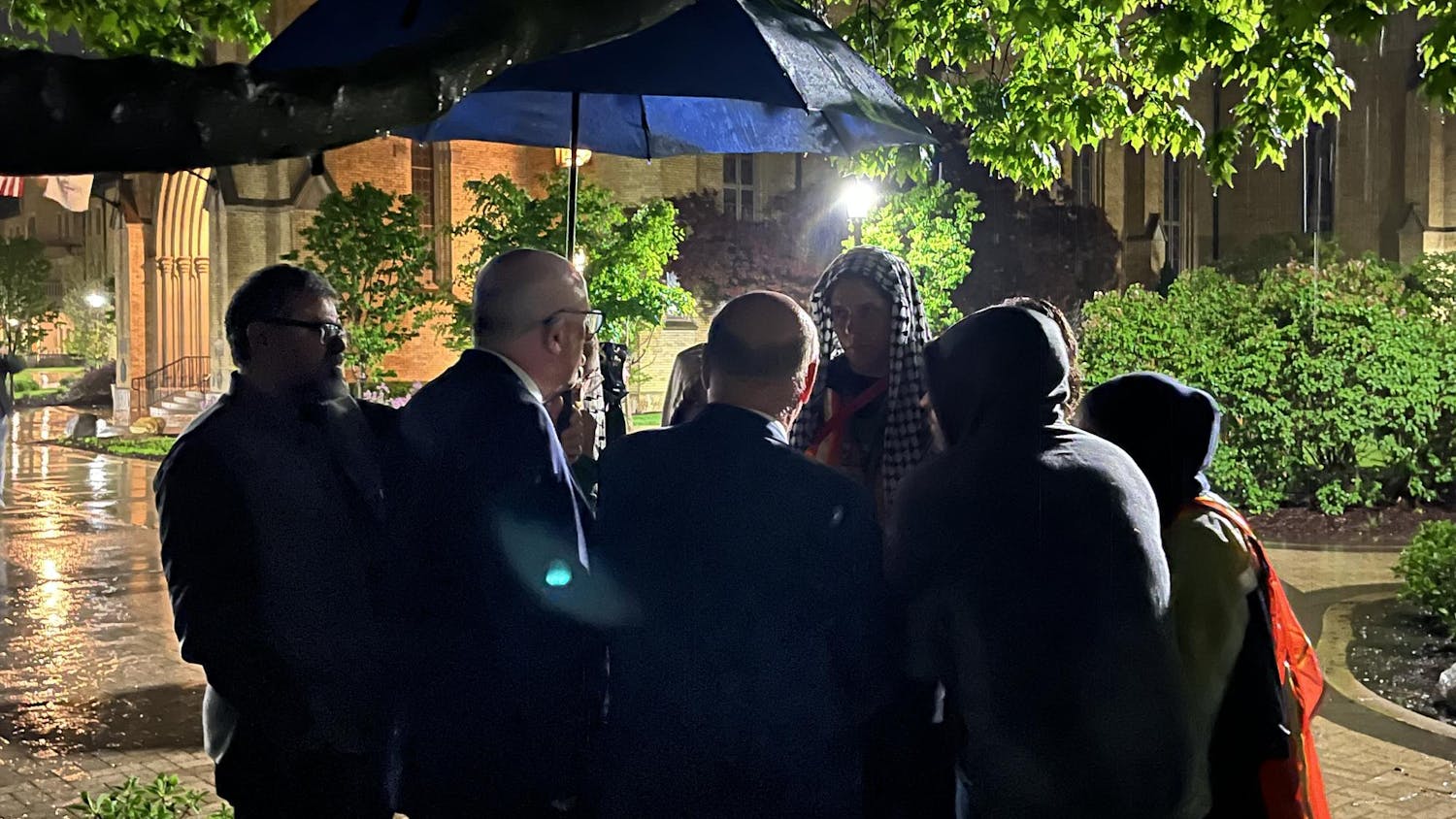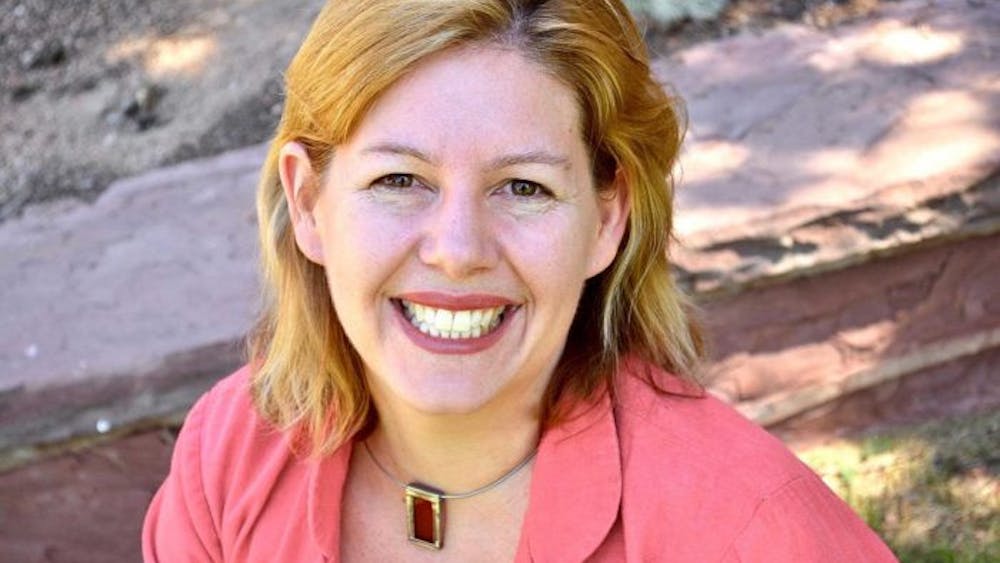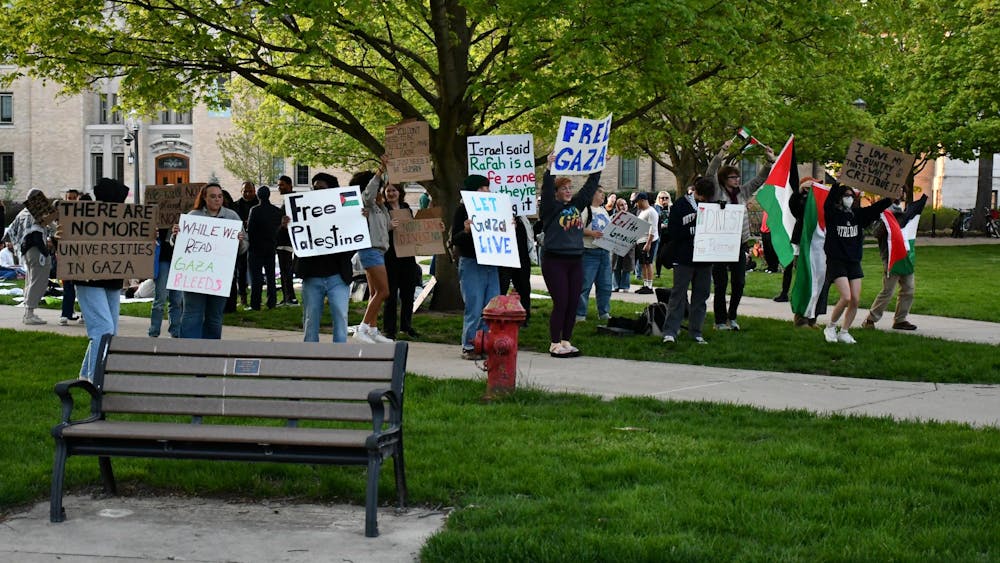In an interview with The Observer on March 30, vice president for Student Affairs Erin Hoffmann Harding said that until the number of sexual assaults on campus was zero, there were still too many.
While this Editorial Board supports the administration’s commendable sentiment, the fact is it is still not doing enough.
According to the University's 2016 Campus Climate Survey, 5 percent of all female respondents indicated they had experienced non-consensual sexual intercourse while enrolled at Notre Dame; 1 percent of all male respondents indicated the same. That means more than 160 students said they had experienced non-consensual sexual intercourse while enrolled at the University.
In 2016, 9.5 percent of respondents to the Saint Mary's Campus Climate Survey indicated they had been sexually assaulted while enrolled at the College — about another 50 students, nearly 93 percent of whom said the person who assaulted them was a student from another institution.
And yet, only 10 percent of the students who indicated they had been sexually assaulted at Notre Dame said they reported it to the University.
Even for those who are cynical about what constitutes “legitimate rape” and have concerns about false reporting, the fact remains that the vast majority of students who believe they have experienced non-consensual sexual intercourse are choosing to not report it to the University. According to the 2016 Campus Climate, 54 percent of all students who responded said they doubted reporting would solve anything, and 30 percent explicitly “did not trust the University’s process.”
Clearly, students do not fully trust Notre Dame’s current process.
That is not to say the University has not done anything in terms of sexual assault prevention. Notre Dame has focused much of its efforts towards education and awareness, and headway has certainly been made in the last year: The survey results indicate a 10 percent increase in familiarity with University policies regarding sexual assault and misconduct, and 90 percent of respondents indicate “the intoxication of someone initiating sexual activity” is not an excuse for his or her failure to obtain consent from the other person. More students are being trained in bystander intervention through GreeNDot. Furthermore, University President Fr. John Jenkins, Saint Mary’s President Jan Cervelli and Holy Cross President Br. John Paige signed a memorandum of understanding in March to ensure more collaboration between the three campuses in addressing sexual assault.
Even with those improvements, however, there are other aspects in need of significant progress: Of those 10 percent of students who did report to the University, 50 percent or less of both complainants and respondents indicated they were “satisfied” with various aspects of the University process, including the impartiality and timeliness of the investigation and the impartiality, timeliness and outcome of the administrative hearing process. Exactly 50 percent of respondents to Saint Mary's Campus Climate Survey were at least satisfied with the College's process for making a formal report, and 66.7 percent of those students indicated they were satisfied with the College's response to their reports.
These sorts of investigations are highly sensitive, and naturally, not everyone is going to be happy with every outcome. However, both the Saint Mary’s and Notre Dame survey results demonstrate a significant lack of trust and lack of satisfaction with administration processes for handling sexual assault cases.
Additionally, the University is under investigation by the United States Department of Education’s Office of Civil Rights (OCR) for possible Title IX violations pertaining to two cases. One is for discrimination based on sex; documents for the other have not been made available, so the nature of the case is unknown.
No definitive stance on whether or not the University mishandled these two cases can be taken until the OCR officially closes them. Yet, no matter the results, the truth still holds that two individuals felt so dissatisfied with Notre Dame's process that they filed complaints with the OCR, both of which were deemed worthy of further investigation. Even if the OCR ultimately determines that nothing is wrong with the University's process, some sort of barrier clearly prevents sexual assault survivors from placing trust in their own academic institution.
Then again, there might just be something wrong. After all, the OCR found that to be case once already in 2011 after it opened an investigation following the death of Saint Mary’s first-year Lizzy Seeberg, who killed herself after reporting she had been sexually assaulted by Prince Shembo, a Notre Dame football player. Seeberg’s father expressed his dissatisfaction with the way the University handled his daughter's case, remarking in a 2010 interview with the Chicago Tribune that, “If not at Our Lady's University, then where? Where in the world would you fight for women? Where in the world would you fight for a cause like this?” The OCR also expressed its concerns, citing among them a lack of clear instruction by the University of students and staff as to what processes would be followed after a report was made to the University.
And although Notre Dame agreed to make changes in how it handles sexual assault cases after the investigation was resolved, similar concerns to those reflected in 2011 continue to arise from amongst the student body. In 2015, a previous Editorial Board asked the student body to “make sexual assault a deeply personal issue.” And indeed, in the past few years, student leaders on campus have worked to change the culture of sexual assault on campus, answering Seeberg’s father’s call.
Student government in particular has made sexual assault awareness and prevention a priority for the last three or four years. This year, the University’s first sexual assault survivor support group was created on campus. The new student government administration — which started its term Saturday — emphasized that expanding sexual assault resources and prevention methods on campus would be a top priority. At the moment, it is working toward the implementation of Callisto, an online platform that timestamps sexual assault reports. Even if the survivor decides not to file an official report, the platform will send the information to the Title IX coordinator if a perpetrator’s name is reported by more than one person — for, according to Callisto’s website, up to 90 percent of assaults are committed by repeat offenders. The implementation of such a program would, hopefully, help empower more survivors, streamline the reporting process and provide University officials with another tool to keep its students safe.
The student body has stepped up. Now, we ask the University’s administration to match that effort.
Approaching the epidemic of sexual assault through education and awareness is a worthwhile endeavor on behalf of the administration — the statistics presented in the Campus Climate survey are highly indicative of some success.
But now, it seems clear that another endeavor must be taken, one that aims to restore trust in the University and its handling of sexual assault complaints. The increasing percentage of respondents who cite a doubt that the University process will solve anything is alarming, and it is a trend that needs to be immediately addressed. This Editorial Board recognizes that some members of the administration — such as Hoffmann Harding — believe their work does not stop until the number of assaults on campus reaches zero. And progress in that direction starts with restoring the students’ trust in the University’s ability to reach a solution. Maybe it starts with pushing for further student input and response regarding University processes. Maybe it starts with just a conversation that creates transparency of Notre Dame’s responses to complaints and what problems students have with those responses.
It might not be clear at this point what has led to that lack of trust, but one thing is clear: Something needs to be done. Because the number of sexual assaults on this campus will never reach zero if the number of students who don't trust the University process does not get to zero first.













